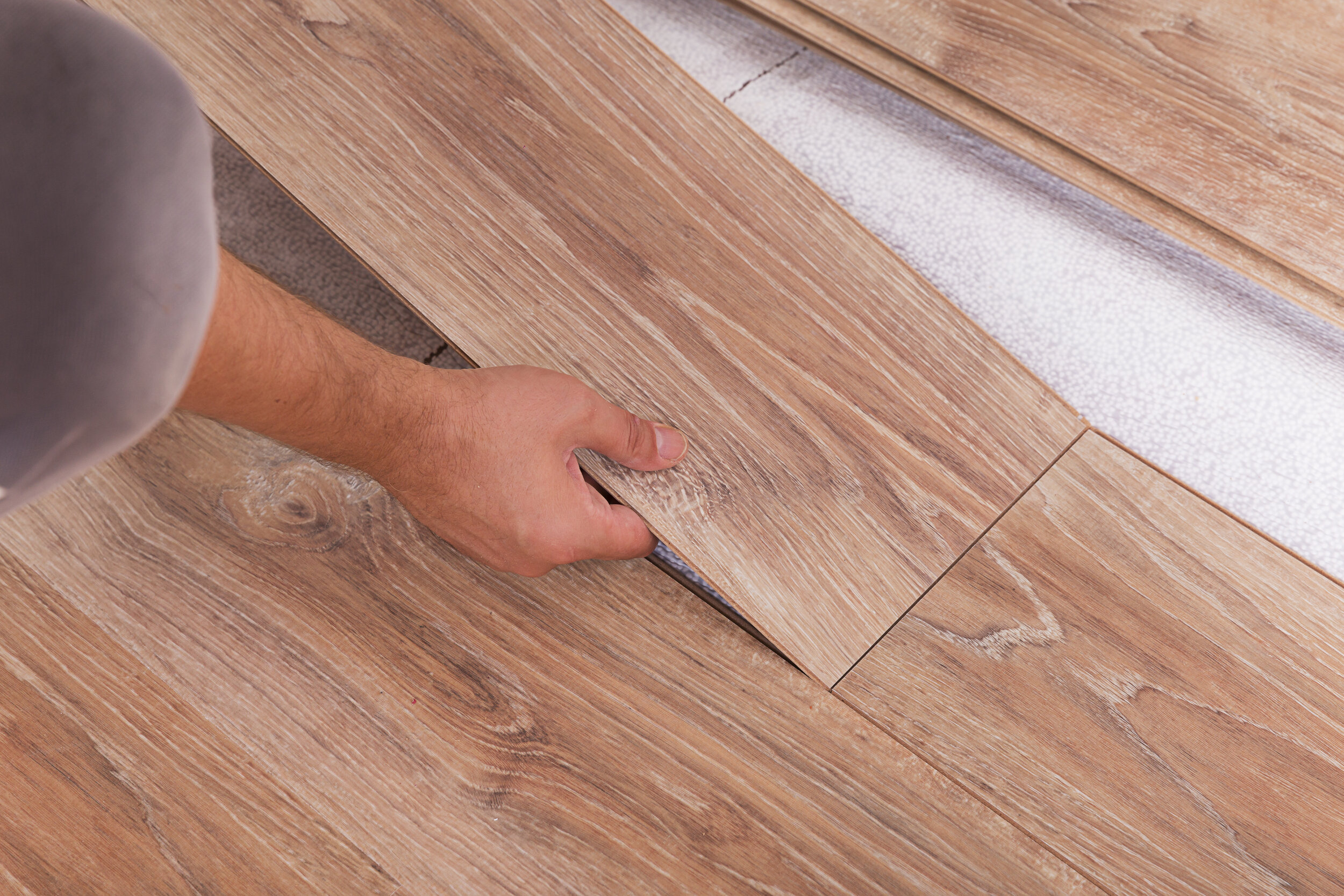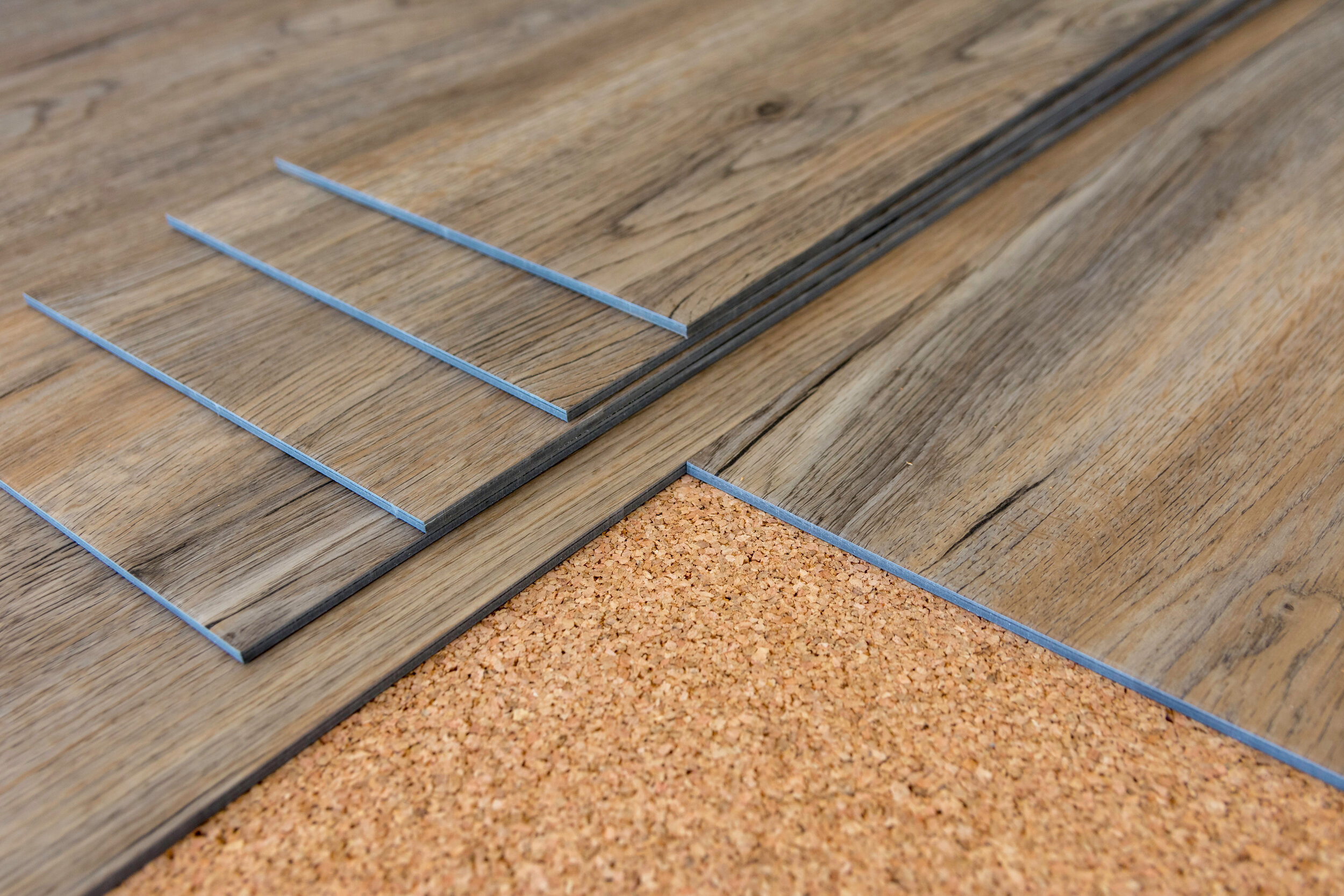The Real Story Behind: Waterproof Laminate Flooring
Traditional Laminate Flooring Installation
With traditional hardwood flooring as popular and as pricey as ever, it would be great to have a budget friendly alternative for builders and homeowners interested in a flooring option that provides the look and under foot feel of hardwood flooring.
Although many of us would prefer the consistency of the same luxurious hardwood floor type throughout the home, due to the high cost and inevitable moisture accumulation in bathrooms, basements and laundry rooms, these rooms are better suited for materials like tile or PVC solutions like luxury vinyl, or vinyl plank.
But what about laminate flooring? Close-up it certainly can look like hardwood, and since it’s an engineered product does that mean is it also waterproof?
Currently most brands marketed as laminate floors are considered water resistant, but not water proof.
Retailers who claim to be selling traditional waterproof laminate flooring are more likely offering a brand of laminate flooring that is water resistant.
In fact, virtually all tongue and groove product with an HDF / MDF core are susceptible to moisture seeping through the laminate layer or treated top layer, and between grooves.
How Traditional Laminate Flooring Is Assembled
What seems like one seamless plank of flooring is actually a four layers of man-made product bonded together through a process called lamination.
Aesthetically, laminate flooring creates the visual appearance and under foot feeling of wood.
Manufacturers develop traditional laminate flooring by fusing together four distinct layers, each with its own purpose in creating the finished product.
Backer Layer
The backer layer is a thick paper that helps to seal the HDF/MDF in the body of the plank. The backer effectively acts as a moisture barrier and protective agent for the base of the plank.
Core HDF or MDF Layer
This is the core of the plank, typically high density or medium density fiber board. This layer gives the board its shape, density and depth. The core also does a good job of mimicking the feel of hardwood.
Design Layer
The design layer is the photographic layer that provides the consumer with the visual design. Usually this design mimics wood or stone and comes in countless varieties.
Overlay Layer
The overlay is the clear layer on the very top of the plank that protects the core and design from damage. More recently manufactures have developed anti-microbial additives that prevent bacteria from growing.
Water Resistant Vs. Waterproof Laminate Flooring
Any significant quantity of water that pools and sits on flooring made with fiber board material will eventually cause buckling, mold and rot.
However, if the amount of water and time passed on the floor isn’t too significant, you should be able to remediate the area without any or much damage to the traditional laminate flooring.
So, a traditional laminate should not be considered waterproof, but perhaps water resistant.
In fact, several brands of laminate flooring market their product as water resistant, including Aquaguard’s Stranded Bamboo product, and Lumber Liquidators Aquaseal brand.
Why Isn’t Laminate Flooring 100% Waterproof?
The lack of traditional waterproof laminate floors comes down to three distinct reasons:
The HDF/MDF core is made from fiberboard, which is essentially wood fibers. Wood can absorb moisture, which in turn can cause the plank to swell, buckle or peel.
The tongue and groove installation leaves the opportunity for water to seep in to the crevasses, providing a home for moisture, mold and damage to the plank.
The backing of the traditional flooring product is also made from a fibrous product, making it susceptible to water damage
Flooring Acclimation Prevents Buckling
It’s also common with both laminate and hardwood flooring for too much moisture to be present in the product prior to installation.
To remedy this potential issues both laminate and hardwood flooring should always spend at least 48-72 hours acclimating to the home’s environment prior to installation.
This additional time allows for the wood or particle board to adjust to the humidity level in the home. Without this adjustment period, the planking might still expand or contact after the install leading to buckling.
Vinyl Waterproof Flooring Options
Although traditional waterproof laminate flooring with a fibrous core doesn’t exist, there are a few other options out there that look like traditional laminate flooring and work well for water prone spaces like bathrooms, kitchens, laundry rooms, and basements.
Poly Vinyl Chloride (PVC) Waterproof Flooring
Billed as 100% waterproof, PVC flooring comes in several different forms including vinyl sheets, vinyl tiles, and luxury vinyl planks.
Each of these PVC products are developed by manufacturers with consumers in mind, providing a wide array of design options, including wood and stone designs.
Vinyl sheets were very popular back in the 1970’s and 80’s before Pergo pioneered its new (fibrous core) laminate plank flooring in the mid 1990s.
Vinyl tiles were also very big back in the 50’s, 60’s 70’s and 80’s. Unfortunately, removal of the product became a huge concern once it was discovered that asbestos within the tiling could be made air born during demolition.
If you’re planning to renovate or demolish an old home that might contain vinyl flooring of any age, please be sure to contact a certified professional to determine the best method for extraction.
Photo: Luxury Vinyl Planking Installation
Luxury vinyl tiles and planks are another great waterproof option. Coretec is an innovator in the luxury vinyl flooring market, with a water proof “core” that stands up to water and mold. Aquastep is another more traditional looking laminate flooring option, but with a 100% PVC core, allowing for a waterproof experience but at the loss of a more traditional wood feeling under the feet.
Traditional laminate flooring may not be waterproof, but there are new waterproof laminate alternatives on the market in Europe and now the US. Just a few years down the road there will likely be dozens of new and exciting options for the home.



